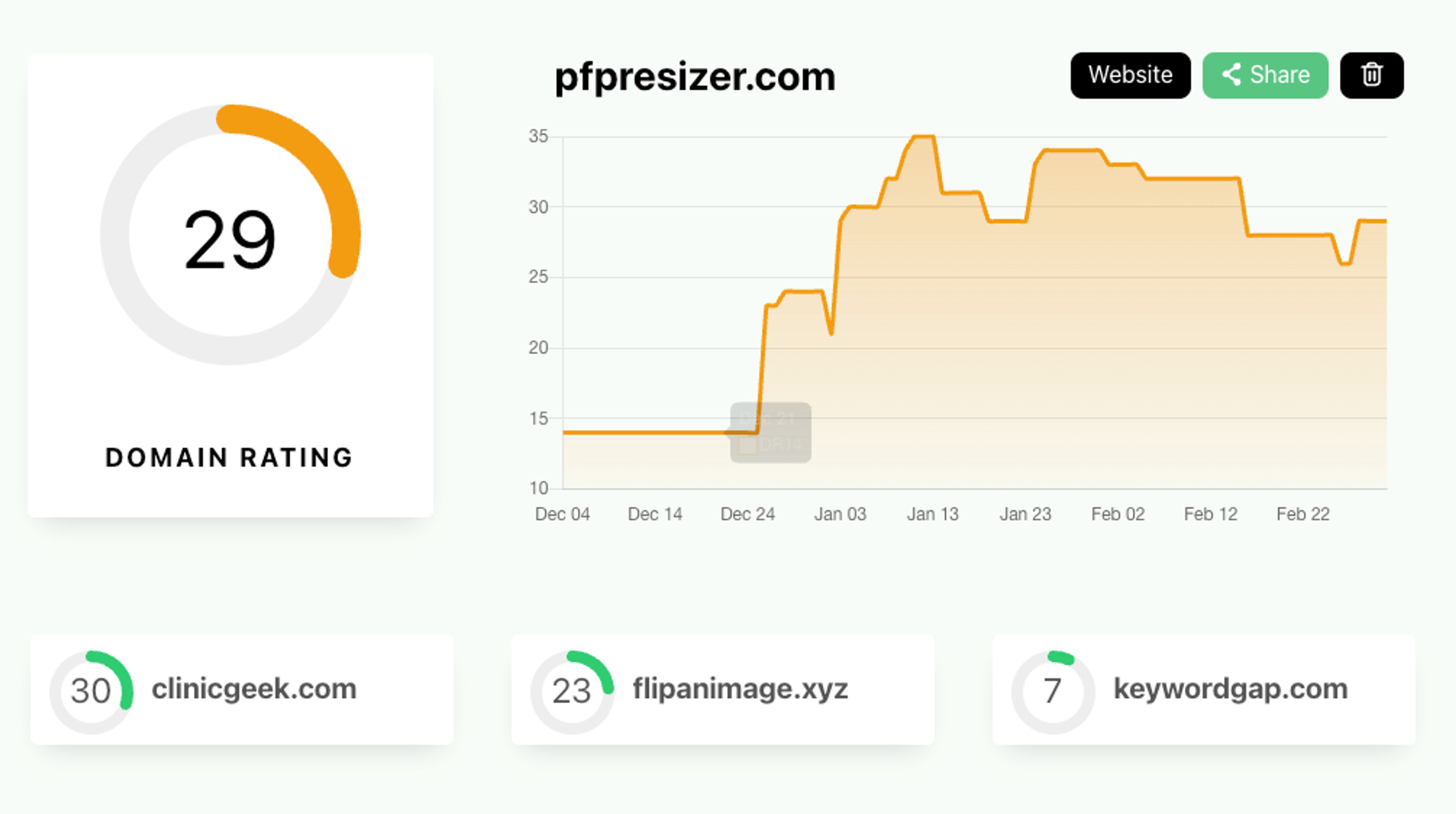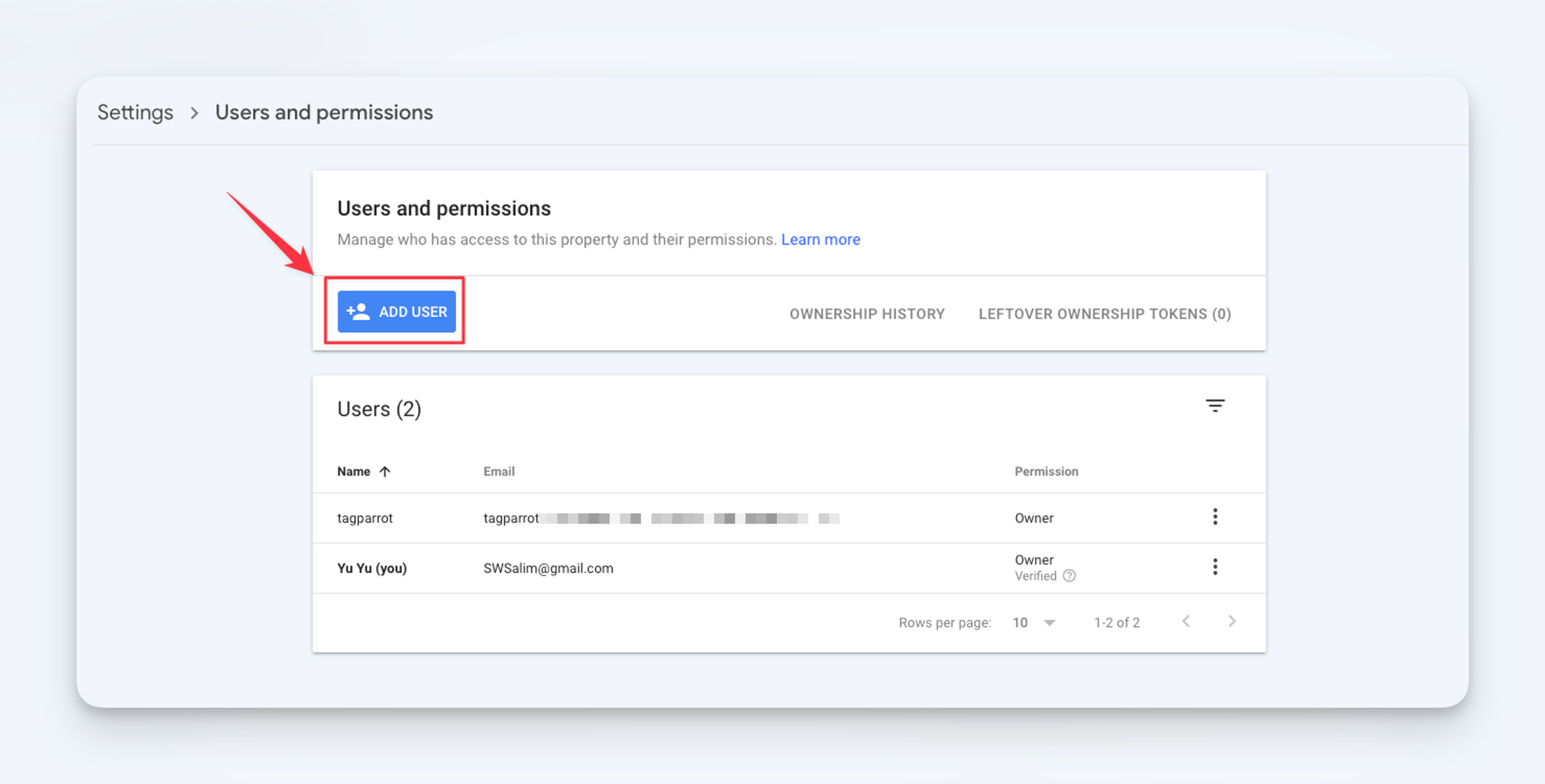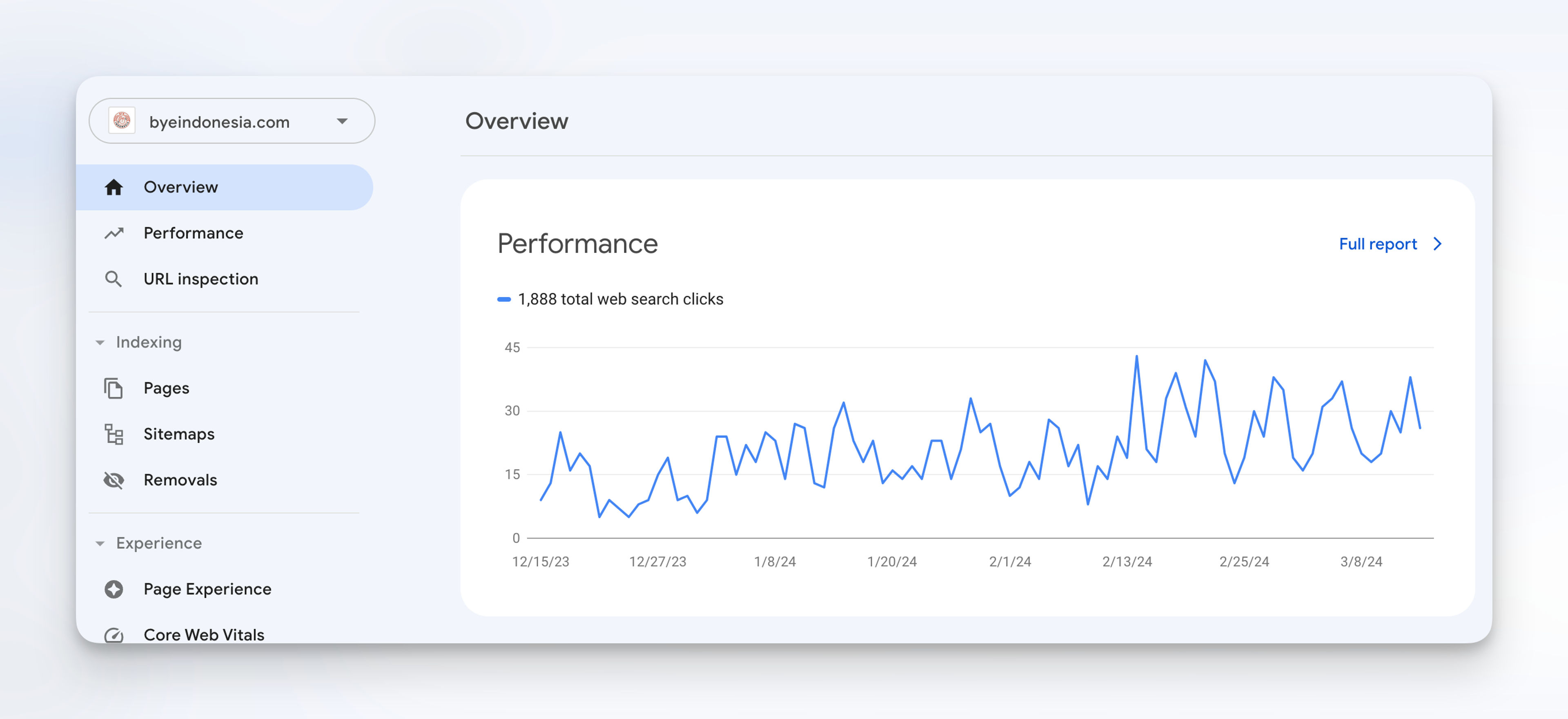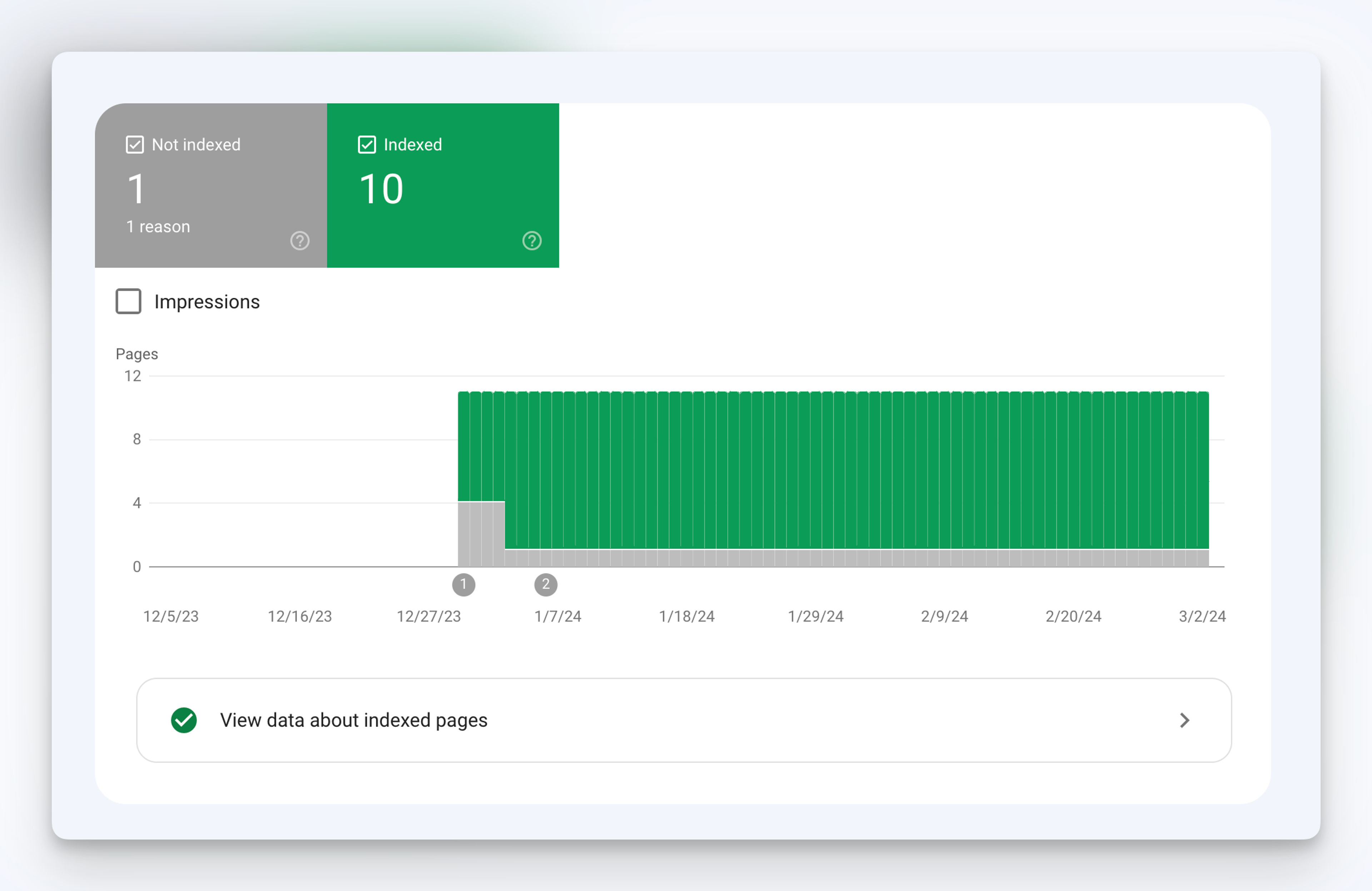
In the vast digital landscape, ensuring your website's content gets found by Google can sometimes feel like searching for a needle in a haystack.
However, one of the most effective ways to improve your site's visibility and SEO is by submitting a sitemap to Google.
In this article, you'll learn how to create a sitemap and submit it to Google to improve your website's SEO.
What is a Sitemap?
A sitemap is a file that lists all the pages on your website, providing important information about each page, such as when it was last updated and how often it changes.
Sitemap helps search engines crawl your site more efficiently, ensuring that all your website’s content gets indexed.
Why are Sitemaps Important?
Sitemaps play an important role in enhancing your website's visibility and SEO. Submitting a sitemap should be the first thing you do after setting up your website in Google Search Console.
Search engines like Google, Yahoo, and Bing use your website’s sitemap to find all the pages on your website.
So, do you need a sitemap?
In short, it depends.
If your site’s pages are properly linked, search engines can usually discover most pages on your site.
A sitemap helps search engines discover URLs on your site, but it doesn't guarantee that all the items in your sitemap will be crawled and indexed. However, in most cases, your site will benefit from having a sitemap.
According to Google, a sitemap may be necessary for your website if:
-
Your website is large. On larger websites, ensuring that each page is interlinked with at least one other page on the site becomes more challenging. Consequently, there is a higher probability that Googlebot and other search engines may miss some of your newly added pages.
-
Your website is relatively new and lacks significant external links. Web crawlers, including Googlebot, navigate the internet by hopping from one link to another. Therefore, without links from other sites directing to yours, Googlebot might not find your pages.
-
Your website features an abundance of rich media content such as videos and images, or if it appears in Google News. Google utilizes the information provided in sitemaps to enhance search results, which can be particularly beneficial for sites rich in media content or featured in news sections.
By submitting your sitemap to Google, you are providing Google with a comprehensive overview of your website's structure and content.
This allows Google to understand your site better and index it more accurately, ultimately leading to improved search engine rankings.
How to Submit a Sitemap to Google?
Google allows you to submit your sitemap directly in its free tool called Google Search Console (GSC), formerly known as Google Webmaster Tools.
1. Create a Sitemap
Before you can submit your sitemap to Google Search Console, you need to create one.
A sitemap can be created manually or by using various online sitemap generation tools or plugins.
If your website is running on WordPress, you could use plugins such as RankMath or Yoast SEO to have an XML sitemap generated for you.
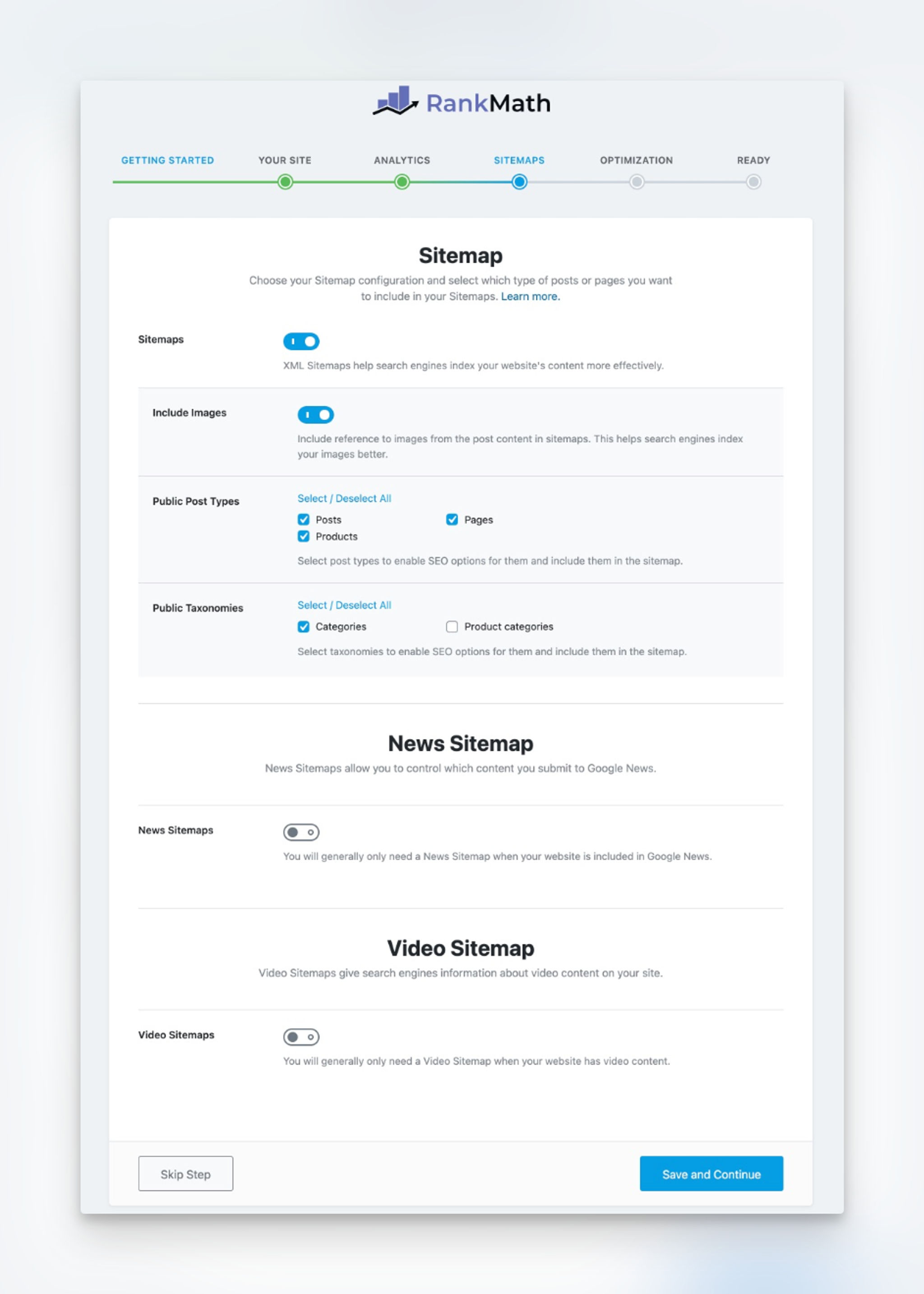

The benefit of using these WordPress plugins includes
- Flexibility - You could configure what goes into the sitemap
- Auto update - Your sitemap gets updated automatically as you create or edit a post or page
- Optimization - Yoast SEO would split up large XML sitemaps to keep them fast and efficient
If you're website is built using Next.js App Router, you could check out this guide to create XML sitemap in Next.js App Router.
On the otherhand, if you're not using WordPress or Next.js, you could consider using XML sitemap generator tools such as Screaming Frog or XML-Sitemaps.com to generate sitemaps for your website.
These free plugins and tools simplify the process and ensure that your sitemap is correctly formatted even for those with limited technical knowledge.
2. Verify Your Website with Google
Before you can submit your sitemap to Google, you need to verify that you are the owner of the website.
First, log in to your Google Search Console account. In the top left corner, click on the dropdown and choose “+ Add property” if you haven’t added your website before.
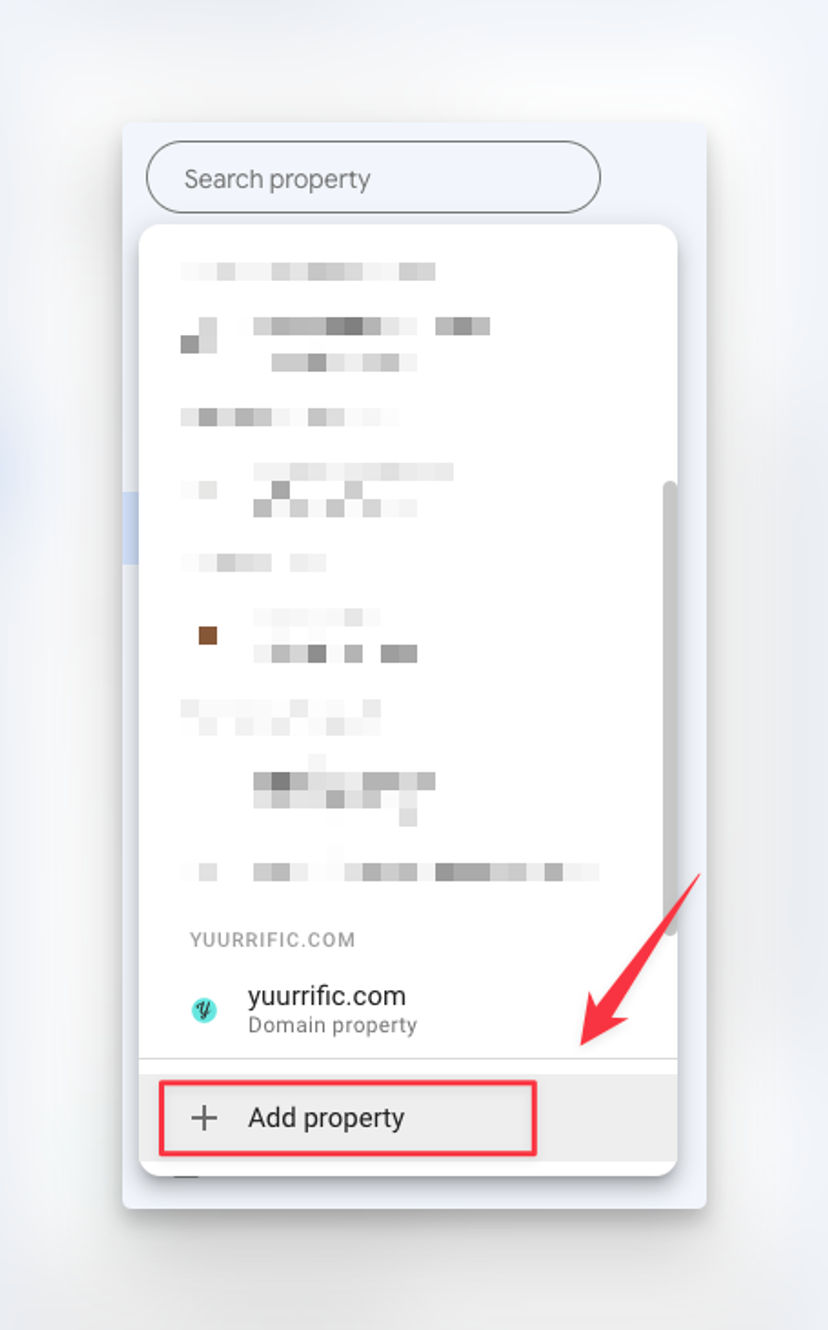
There are 2 ways you could add your website, I would recommend using your Domain.
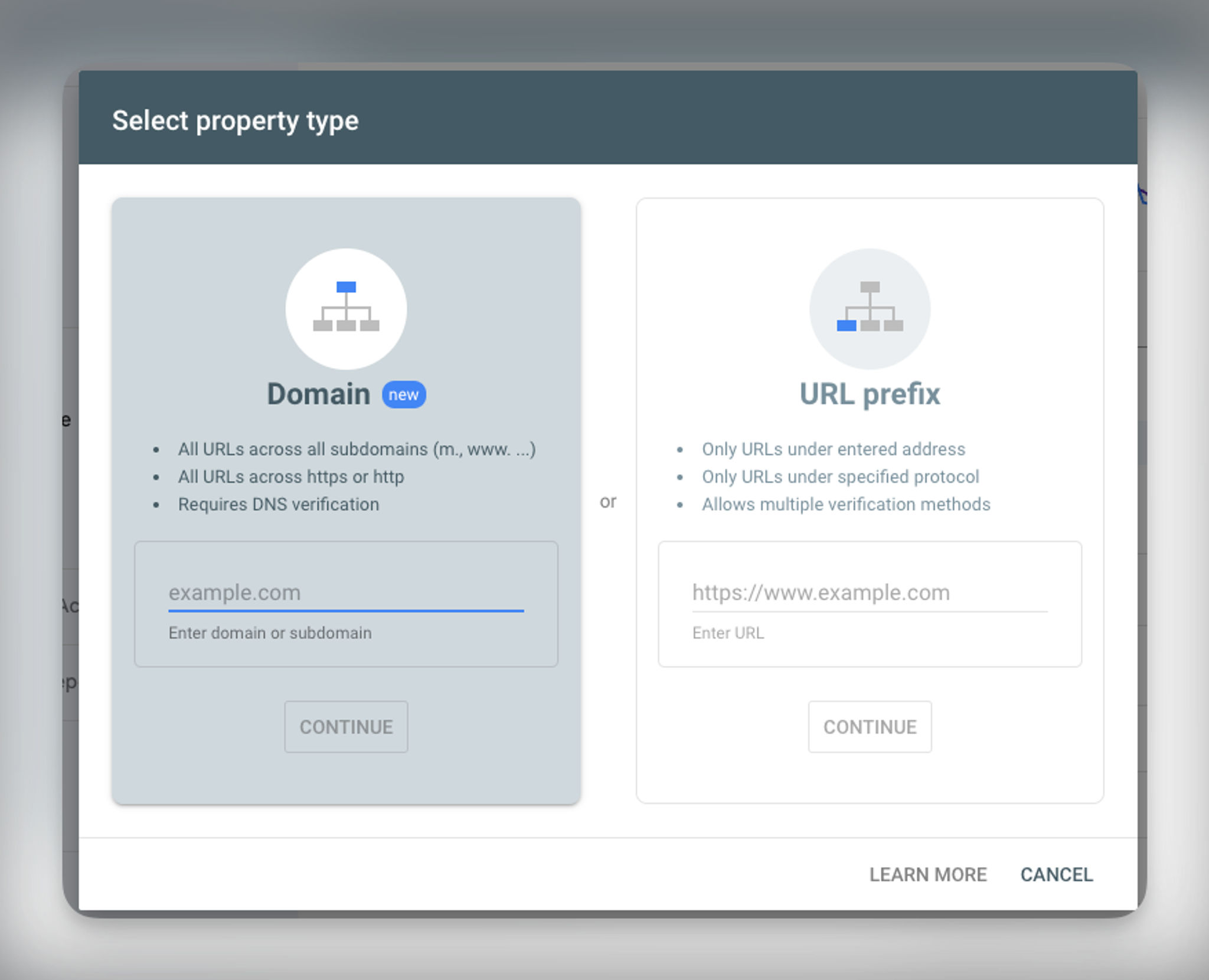
Enter your website domain and follow the step-by-step instructions provided by Google to verify your domain ownership.

Verification ensures that only authorized individuals can access and modify the website's settings, including submitting sitemaps.
3. Submit Your Sitemap to Google Search Console
Now, that your website is verified, follow these steps to submit your sitemap.
Select your website from the list of properties in the top left corner.
Click on the "Sitemaps" tab in the left-hand menu in the “Indexing” section.
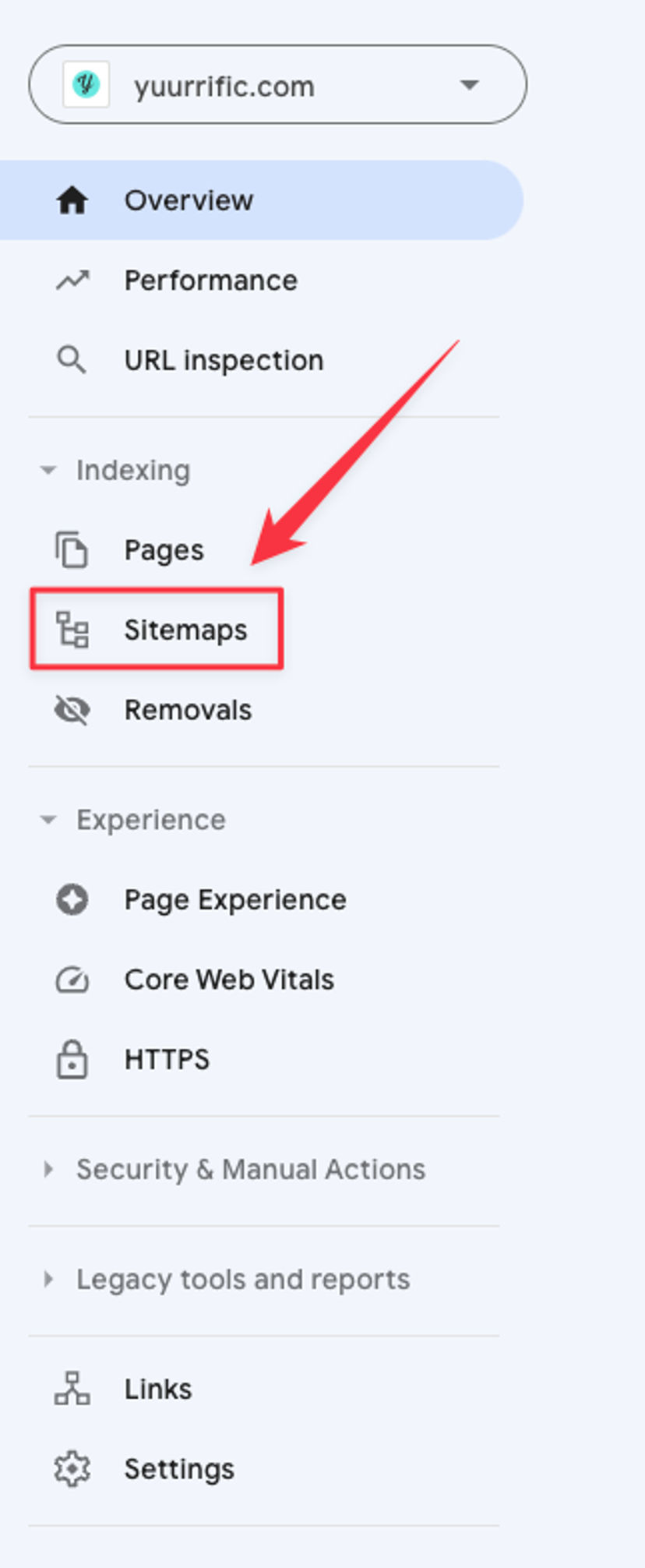
You’ll see 2 sections here: “Add a new sitemap” and “Submitted sitemaps”.

Enter the URL of your sitemap in the provided field (e.g., "https://www.yourdomain.com/sitemap.xml").
Click on the "Submit" button.
You’ll see a success message confirming that your sitemap has been successfully submitted and Google will now start crawling your sitemap and indexing your website's pages.
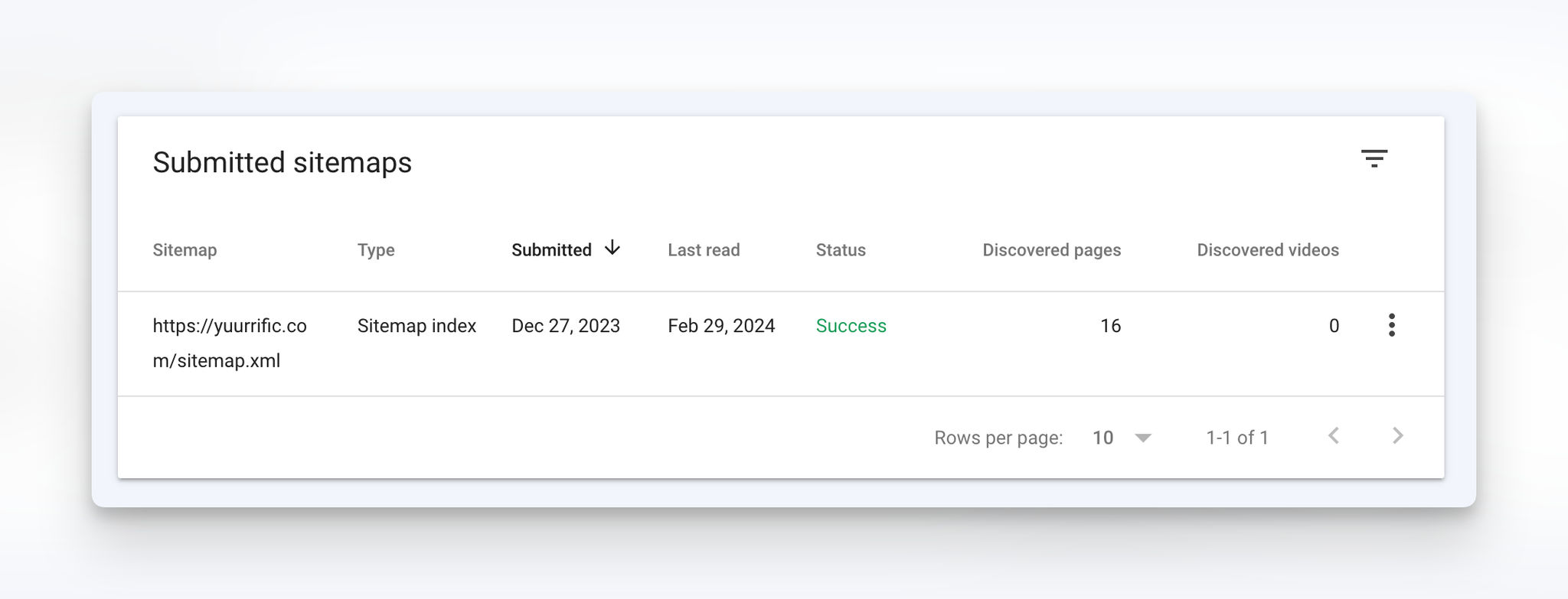
In some cases, you might see “Couldn’t fetch” error that means Google couldn’t find your sitemap. Make sure you enter the correct URL.

If a sitemap fetch or parse fails, Google will continue trying to fetch and process the sitemap for a few days. If the attempts continue to fail, Google will stop trying to crawl that URL.
Monitor Your Sitemap Status
Once you have submitted your sitemap to Google, it is essential to monitor its status regularly.
Monitoring allows you to identify any issues or errors that may prevent Google from properly indexing your website.
Google Search Console provides various tools and reports to help you monitor your sitemap's status
Page Indexing report
Once you have submitted your sitemap, Google will try to crawl it as soon as possible. You can click on the 3 dots icon on your sitemap and click “See page indexing” to see the page indexing status for your sitemap.
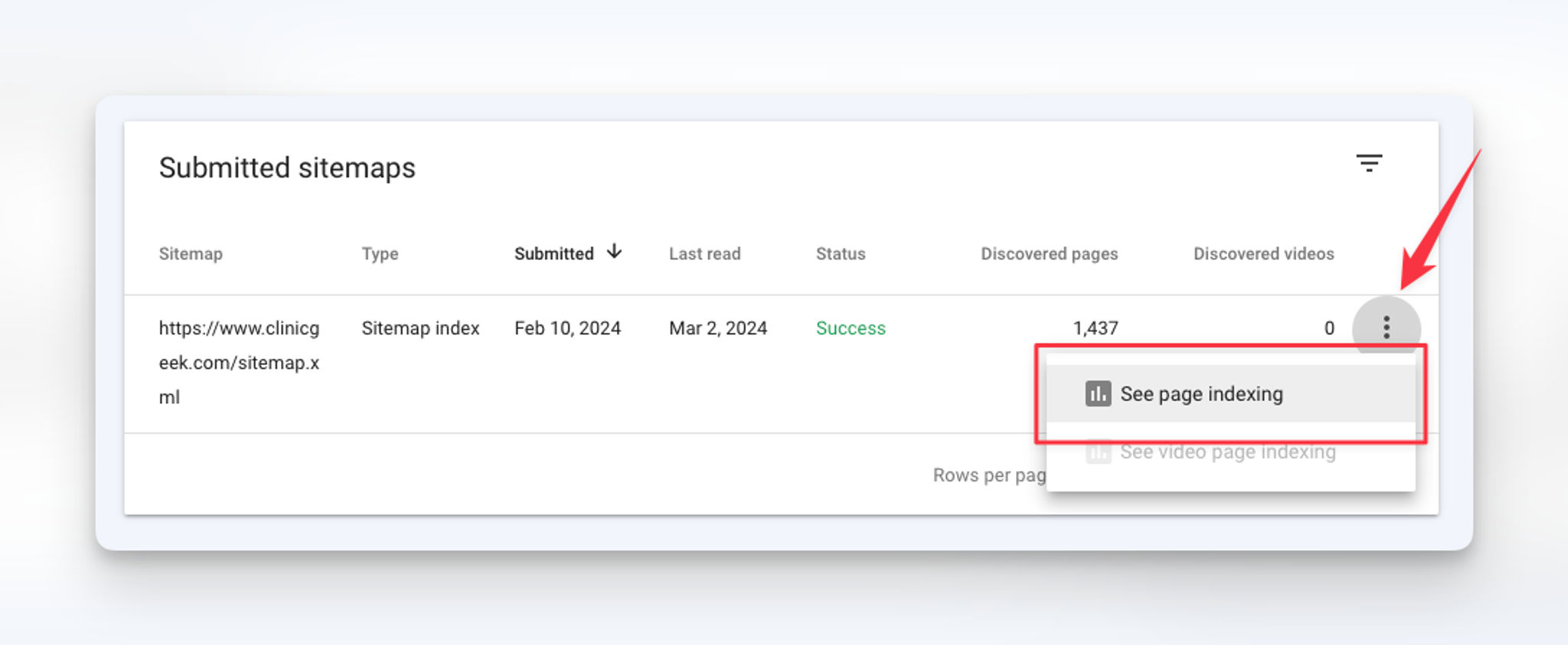
This report shows how many pages on your website are indexed and any page indexing issues that preventing pages from getting indexed.
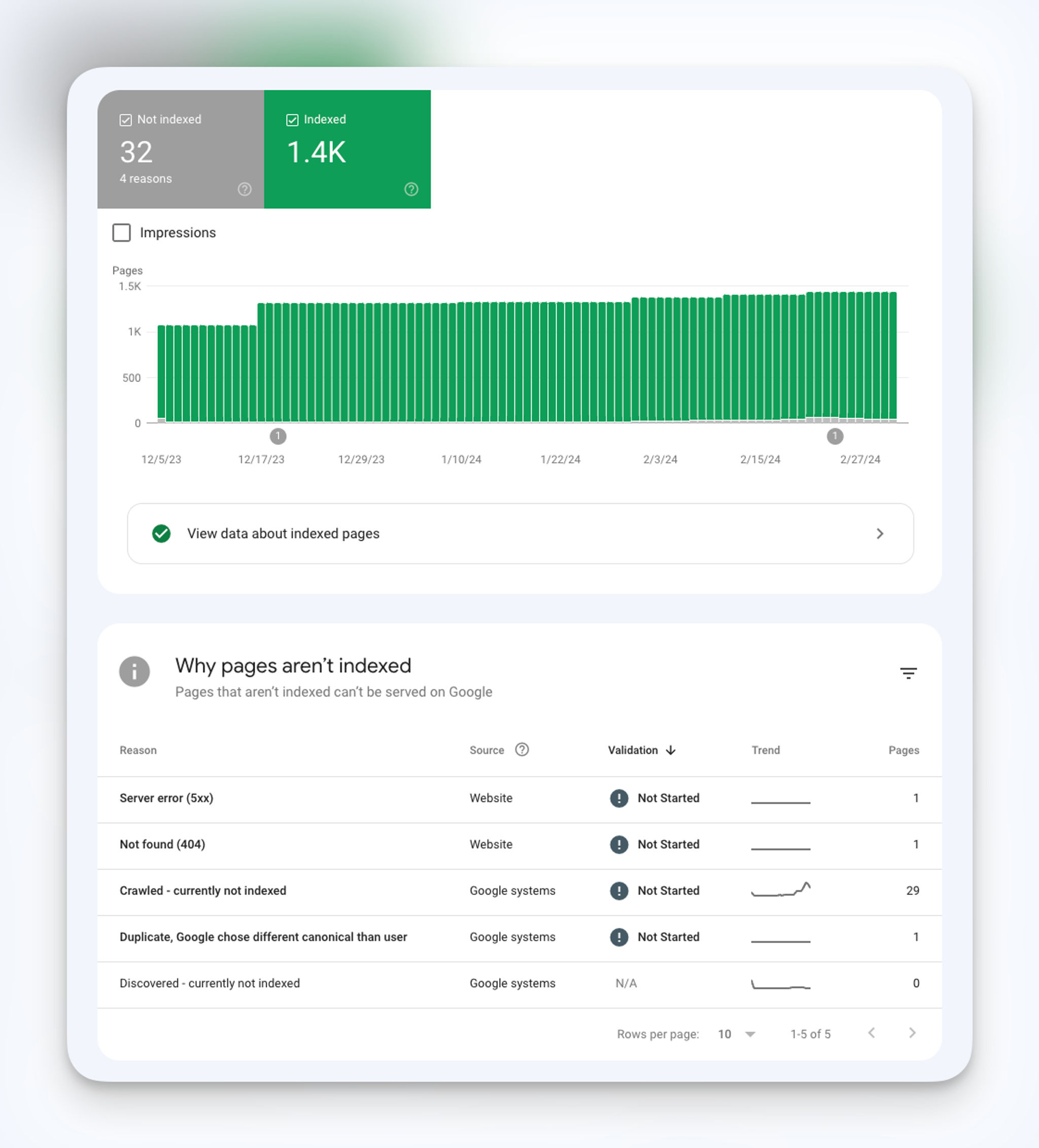
URL Inspection tool
You could click on “URL Inspection” tab in the left-hand menu.
Enter any URL on your website and click submit. On the URL Inspection result, you could see the page indexing status for the page whether it’s indexed or not indexed by Google.
If it’s a new page created, chances are it’s not indexed by Google just yet. You click on “Request Indexing” button to submit this page for indexing.
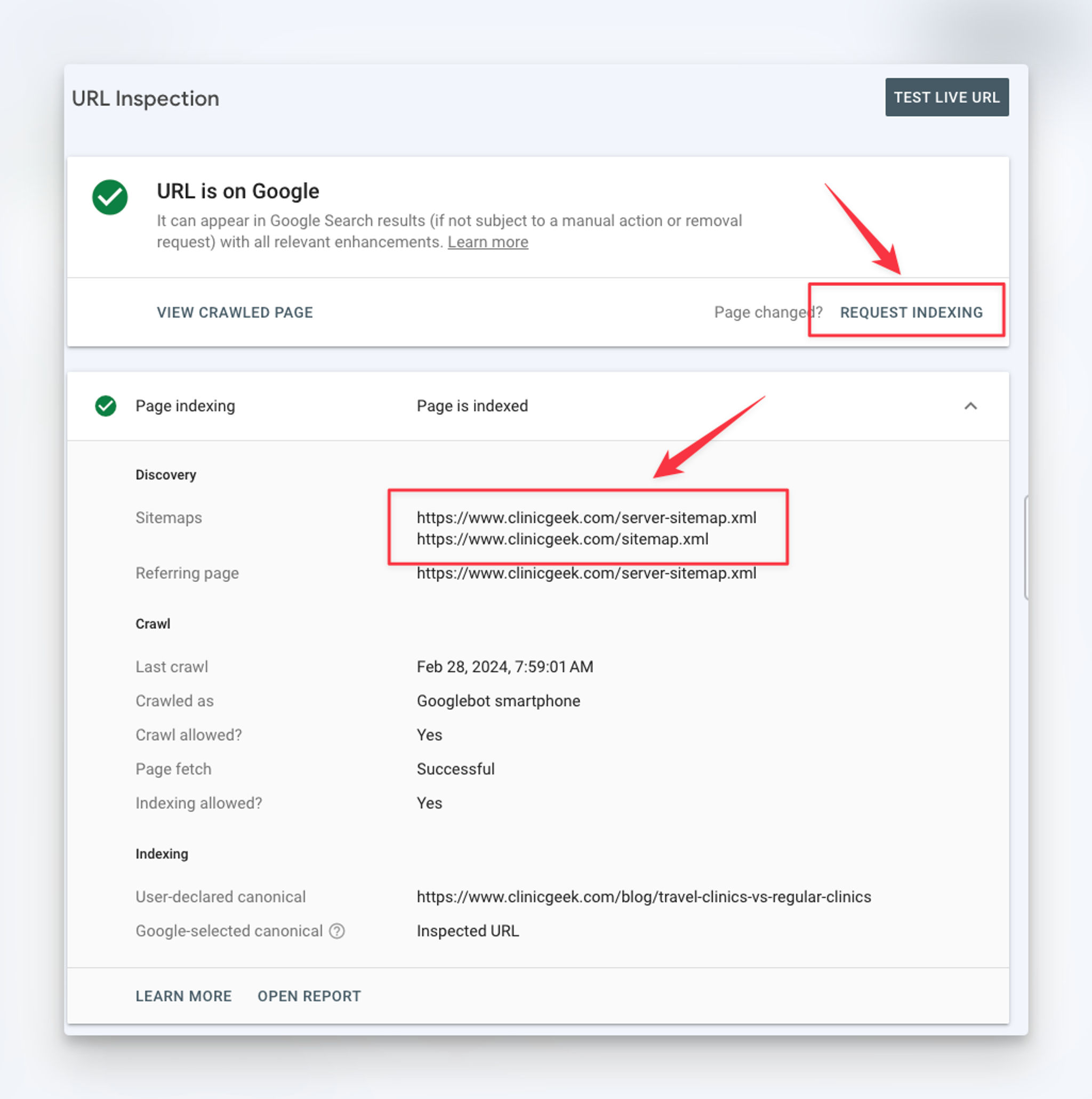
On the report, you could find out how Google discover your page via sitemaps.
Regularly check these tools and reports to ensure that your sitemap is functioning correctly and that all your pages are being indexed by Google.
Common Mistakes to Avoid
Mistake 1: Not Including All Pages in the Sitemap
One common mistake is failing to include all the pages on your website in the sitemap.
Ensure that every important page, including subpages and blog posts, is included in your sitemap to maximize your site's visibility in search results.
Mistake 2: Not Updating the Sitemap Regularly
Another mistake is neglecting to update your sitemap regularly. As you add or remove pages from your website, make sure to update your sitemap accordingly and resubmit it to Google.
This ensures that Google always has the most up-to-date information about your website.
Benefits of Submitting Your Sitemap to Google
Improved Search Engine Visibility
By submitting your sitemap to Google, you significantly improve your website's visibility in search engine results. Google can better understand your site's structure and content, making it more likely to display your pages to users searching for relevant information.
Faster Indexing of Web Pages
When you submit your sitemap to Google, you expedite the indexing process. Google can quickly identify and index new pages or updates to existing pages, ensuring that your content appears in search results as soon as possible.
Conclusion
Submitting your sitemap to Google is a simple yet powerful way to enhance your website's visibility and SEO.
By creating and submitting a sitemap, you can ensure that your valuable content gets indexed and displayed in search results.
Don't overlook this valuable opportunity to enhance your online presence and attract more organic traffic to your site.able opportunity to enhance your online presence and attract more organic traffic to your site.

